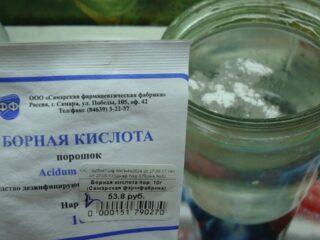Content
White Muscat grapes are one of the oldest varieties used for making fine wines. High yield, although the indicator is unstable, may differ in different years. The berries have good taste. There are several features in care that are worth paying attention to (shelter for the winter, removal of unfruitful shoots and others).
History of selection
White Muscat is a grape variety developed in the USSR more than 80 years ago. The crop was registered in the register of selection achievements in 1945. Originator – Troshin L.P. (Krasnodar). This is one of the oldest varieties.
There is a version that it was initially bred in Syria, Egypt and the countries of the Arab Peninsula. The variety has spread throughout the world.It is cultivated not only in Russia, but also in Spain, Italy, France, Bulgaria, Hungary, the countries of the Balkan Peninsula and the USA.
Culture is also called (synonyms):
- Busuyok;
- Muscat blanc, small berry;
- Feger muskotai;
- Moscatello bianco;
- Tamyanka.
Description of the grape variety Muscat white
White nutmeg is a shrub of medium vigor. The crowns of young shoots have a greenish-gray tint and noticeable strong pubescence. Young leaves are wine-red. The bushes are medium-sized, round in shape, and can be three- or five-lobed. The leaves of the grape are funnel-shaped, rich green in color. The inner side is covered with cobwebby-bristly pubescence.
The upper side cutouts are of small depth, an ovoid lumen is noticeable. The cutouts on the lower side are noticeably smaller; they are lyre-shaped, sometimes V-shaped. The petiole notches are in most cases closed, and a slit-like opening is noticeable. Flowers of both sexes grow on one plant of the Muscat white variety, making self-pollination possible, especially if the weather conditions are good.
Bunches
The clusters of the White Muscat variety are medium in size, have a classic cylindrical-conical shape, and are often cylindrical. The mass reaches 100-450 g. They have short combs. The color is green, with a hint of pinkish. They become lignified only at the base.

Small bunches of grapes
Berries
The berries are round in shape, often unequal in size, average diameter is from 10 to 17 mm, weight is from 1.4 to 1.8 g.The color is golden yellow, with a bronze tan visible on the sunny side. Each berry contains two seeds. If desired, they can be used for further breeding, since White Muscat is a variety, not a hybrid.
Vine
The young vine is green in color and ripens at 75-90% of its length. Then the shoots acquire a light brown color, with dark areas visible on the nodes. Mature bushes develop quite a lot of barren vines that need to be regularly broken off. Thanks to this, productivity can be maintained at a fairly high level.
Characteristic
The variety is valued for its taste. The pulp gives a pronounced muscat flavor and is used to make wine. The fruits ripen relatively early. The main wave of fruiting occurs in September.
Ripening period of Muscat white grapes
According to the ripening period, white Muscat grapes belong to the mid-early or middle (mid-ripening) varieties. From the moment the buds open until the berries reach technical maturity, 140-150 days pass, sometimes less or more.
To prepare dry wine, as well as in case of unfavorable weather forecast, harvesting can begin several weeks earlier.
Productivity
The yield of Muscat white grapes is not stable. The indicator can vary in the range of 60-120 centners per hectare. This is due to the fact that less than half of the fruit-bearing shoots grow – about 44%. The fruiting coefficient is estimated at 0.46, the fruiting coefficient is 1.22 bunches per shoot.
Taste
The pulp of the berries is juicy and has a strong nutmeg flavor, which is why the name of the variety is associated.Sweet tones with moderate sourness are felt. In general, the taste is assessed as very good, which is noted in the register of selection achievements.

The taste of the grapes has well-pronounced muscat tones.
Growing regions
White muscat can be grown in all regions of southern Russia - the North Caucasus, Krasnodar and Stavropol territories, the Republics of Crimea, Adygea, Kalmykia. Also, the register of selection achievements indicates that grapes can be cultivated in the regions of the Lower Volga region, for example, in the Volgograd and Astrakhan regions.
Frost resistance
White nutmeg is not a winter-hardy variety. It requires mandatory shelter in all regions, including the south. Moreover, this rule applies to both young seedlings and adult bushes.
Drought resistance
Data on drought resistance are not provided in the description of the variety. It can be assumed that in hot weather the bushes need additional watering to maintain productivity.
Resistance to diseases and pests
The Muscat white variety does not have good immunity. It can suffer from mildew and gray mold, and there is also no resistance to phylloxera, cluster budworm and spider mites. Therefore, preventive treatment with fungicides should be carried out every spring. In the summer, the bushes are periodically inspected and when pests appear, folk remedies or insecticides, insectoacaricides are used.
Methods of application
White Muscat grapes are classified as technical varieties. It is used to produce vintage dessert wines. Fresh consumption is allowed.
Composition and benefits of white Muscat grapes
The pulp contains sugars, vitamins (including C, E, K, group B, PP), as well as microelements (selenium, zinc, magnesium, phosphorus, iron and others). Thanks to this, grapes are able to stabilize blood pressure, increase performance, improve memory and concentration. It should be remembered that it contains a lot of simple carbohydrates, so people suffering from diabetes and obesity can only consume berries in small quantities.
Advantages and disadvantages
The Muscat white variety has a very good taste. Despite several serious drawbacks, it continues to be grown in southern Russia and in some regions of the Volga region.

The fruits are used to produce white wines
Pros:
- pleasant taste;
- noticeable nutmeg flavor;
- suitable for the production of fine wines;
- can be used fresh, for making juices and compotes.
Minuses:
- low winter hardiness;
- unstable yield;
- in unfavorable weather, severe peas are observed;
- buds and ovaries are prone to shedding;
- almost 60% of shoots are infertile;
- the kidneys awaken early and may suffer from age-related frosts;
- no resistance to mildew, spider mites.
Planting Muscat white grapes
The planting of seedlings of the Muscat white variety is planned a month before frost - i.e. from late September to mid-October (depending on the region). The place should be well lit and without stagnant moisture. Standard landing instructions:
- Soak the roots of the seedlings in a solution of Epin or another growth stimulant.
- Dig several holes measuring 70*70 cm.
- Place small stones on the bottom (10 cm layer).
- Place the seedling in the center.
- Fill with fertile soil and compact it so that the root collar is flush with the surface
- Water, mulch, cover for the winter.
Caring for white Muscat grapes
Caring for grapes of this variety has several features:
- For the winter, plantings are mulched and covered. To do this, the grape bushes are removed from their supports and laid on wooden boards or spruce branches. Cover the top with spruce branches, dry leaves or dense agrofibre.
- In spring, the fruit shoots of the Muscat white grape should be shortened so that 10-12 buds remain on them (55-65 buds per bush).
- Barren vines need to be constantly broken (also better in the spring).
Otherwise, the rules of care are standard - periodic watering, fertilizing, mulching, loosening and weeding, pruning, treatment against pests and diseases.
Conclusion
White Muscat grapes have a pleasant taste and aroma. This is a technical variety that is suitable for making wine. Requires special care, including shelter for the winter. If agricultural techniques are followed, the crop can be grown even in the regions of the Lower Volga region.
Reviews of white Muscat grapes








